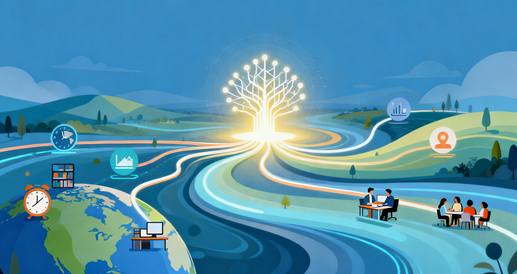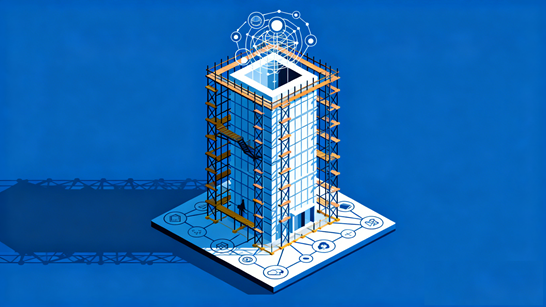The Identity Transformation Behavior Design System
Transform your identity through evidence-based behavior design. This system uses identity statements, behavior evidence tracking, and environment engineering to create lasting change from the inside out.
The Identity Transformation Behavior Design System: Become the Person Who Achieves Your Goals
Why do most habit trackers fail? They focus on what you do, not who you become. This system uses identity-based behavior design to create change from the inside out, making desired behaviors automatic because they're who you are.
The Identity Transformation Trinity
1. Identity Declaration
The Core Principle: Every action is a vote for the type of person you wish to become.
Identity Statement Framework:
- From: "I'm trying to eat healthy"
- To: "I'm the kind of person who eats nutritious food"
- From: "I need to exercise more"
- To: "I'm someone who enjoys being active"
Implementation Process:
- Define 3 core identity statements for your goals
- Create vivid mental images of this identity in action
- Write identity statements in present tense
- Review statements daily with emotional engagement
2. Behavior Evidence Collection
The Evidence Principle: Identities are formed through consistent, small acts of evidence.
Behavior Evidence Tracking:
- Micro-Behaviors: Tiny actions that support identity
- Consistency Over Intensity: Daily small wins beat occasional big efforts
- Evidence Journaling: Document every identity-supporting action
- Progress Photography: Build visual evidence of transformation
Evidence Collection System:
- Daily recording of 3+ identity-supporting behaviors
- Weekly review of accumulated evidence
- Identity belief strength scaling (1-10)
- Celebration of evidence milestones
3. Environment Engineering
The Context Principle: Behavior design trumps willpower every time.
Environment Optimization Framework:
- Friction Reduction: Make desired behaviors easier
- Friction Addition: Make undesired behaviors harder
- Visual Cues: Environment reminders of desired identity
- Context Design: Spaces designed for specific identities
The Behavior Design Methodology
Fogg Behavior Model Implementation
B = MAP (Behavior = Motivation + Ability + Prompt)
Motivation (Identity-Based):
- Connect behaviors to core values and desired identity
- Use future self visualization for emotional engagement
- Implement identity-based decision making
Ability (Environment Design):
- Start with tiny, easy-to-perform behaviors
- Gradually increase difficulty as identity strengthens
- Engineer environment to reduce required ability
Prompt (Strategic Cues):
- Use existing habits as anchors for new behaviors
- Design environmental prompts aligned with identity
- Implement strategic friction for unwanted behaviors
Identity Reinforcement Cycle
Daily Practice:
- Morning: Identity statement review and visualization
- Throughout Day: Identity-based decision making
- Evening: Behavior evidence collection and reflection
Weekly Process:
- Evidence Review: Assess accumulated identity proof
- Environment Audit: Identify and remove friction points
- Identity Strength Assessment: Measure belief in new identity
- Strategy Adjustment: Optimize based on what's working
Implementation Framework
Phase 1: Identity Foundation (Weeks 1-2)
Focus: Identity clarity and environment setup
- Define 3 core identity statements
- Design environment for identity support
- Establish daily identity rituals
- Create identity visualization practices
Phase 2: Evidence Accumulation (Weeks 3-6)
Focus: Consistent behavior evidence collection
- Implement tiny habit stacking
- Daily evidence journaling
- Identity-based decision practice
- Weekly evidence review and celebration
Phase 3: Identity Integration (Weeks 7-12)
Focus: Identity automation and social proof
- Behaviors become automatic identity expressions
- Engage with identity-aligned communities
- Share identity narrative with others
- Serve as example for similar transformations
Advanced Identity Transformation Techniques
Identity Story Rewriting
Process:
- Identify limiting self-narratives
- Challenge evidence for old stories
- Write new empowering narratives
- Collect evidence for new stories
- Share new stories publicly
Gateway Habit Design
Concept: Identify one keystone habit that:
- Makes other good habits easier
- Provides disproportionate identity evidence
- Creates positive ripple effects
- Serves as daily identity reinforcement
Social Identity Leveraging
Strategies:
- Join communities of desired identity
- Adopt language and terminology
- Find identity mentors and models
- Share transformation journey appropriately
Measurement and Optimization
Identity Metrics
- Identity Belief Strength: 1-10 scale weekly assessment
- Behavior Evidence Volume: Count of identity-supporting actions
- Decision Alignment Percentage: % of decisions matching ideal identity
- Environmental Support Score: Friction/facilitation assessment
Progress Tracking
- Weekly Identity Integration Review
- Monthly Transformation Milestone Assessment
- Quarterly Identity Evolution Evaluation
- Annual Identity Legacy Planning
Troubleshooting Common Transformation Barriers
When Identity Feels Inauthentic
- Focus on smaller, believable identity statements
- Collect more behavior evidence
- Use "as if" practice while evidence accumulates
- Find social proof and role models
When Motivation Fluctuates
- Reconnect with core values and "why"
- Review accumulated evidence and progress
- Use future self visualization
- Implement temptation bundling with enjoyable activities
When Environment Resists Change
- Start with one small environment change
- Use implementation intentions ("When X happens, I will Y")
- Design for laziness and convenience
- Remove rather than resist temptations
Stop tracking habits and start building identity. Click "Use This Template" to begin the journey from who you are to who you wish to become.
Открыть Schedule Maker для настройки и экспорта.

The Goal Deconstruction & Habit Stacking System
Achieve your big goals with this unique habit-tracking schedule. This free template helps you break down quarterly goals into weekly milestones and daily "atomic habits" using the habit stacking method for guaranteed progress.
View details

The Digital Nomad Nervous System Optimizer
Optimize your nervous system for the digital nomad lifestyle. This neuroscience-based system addresses the unique cognitive challenges of location-independent work, from environmental adaptation to distributed presence management.
View details

The Knowledge Architecture Engineering System
Engineer robust knowledge architectures that withstand academic pressure. This system uses cognitive science principles to build interconnected knowledge frameworks, optimize neural pathways, and create durable academic understanding.
View details
